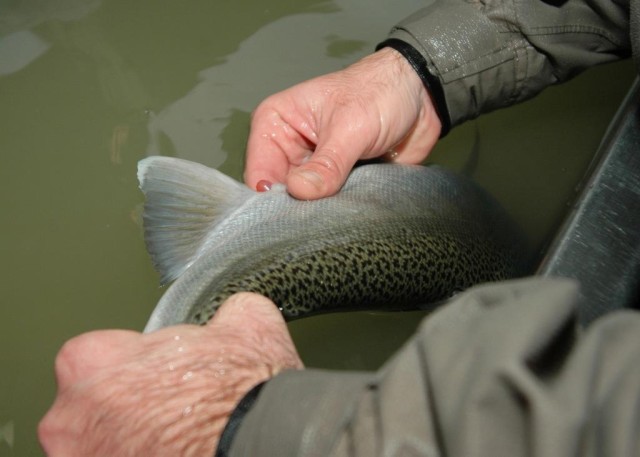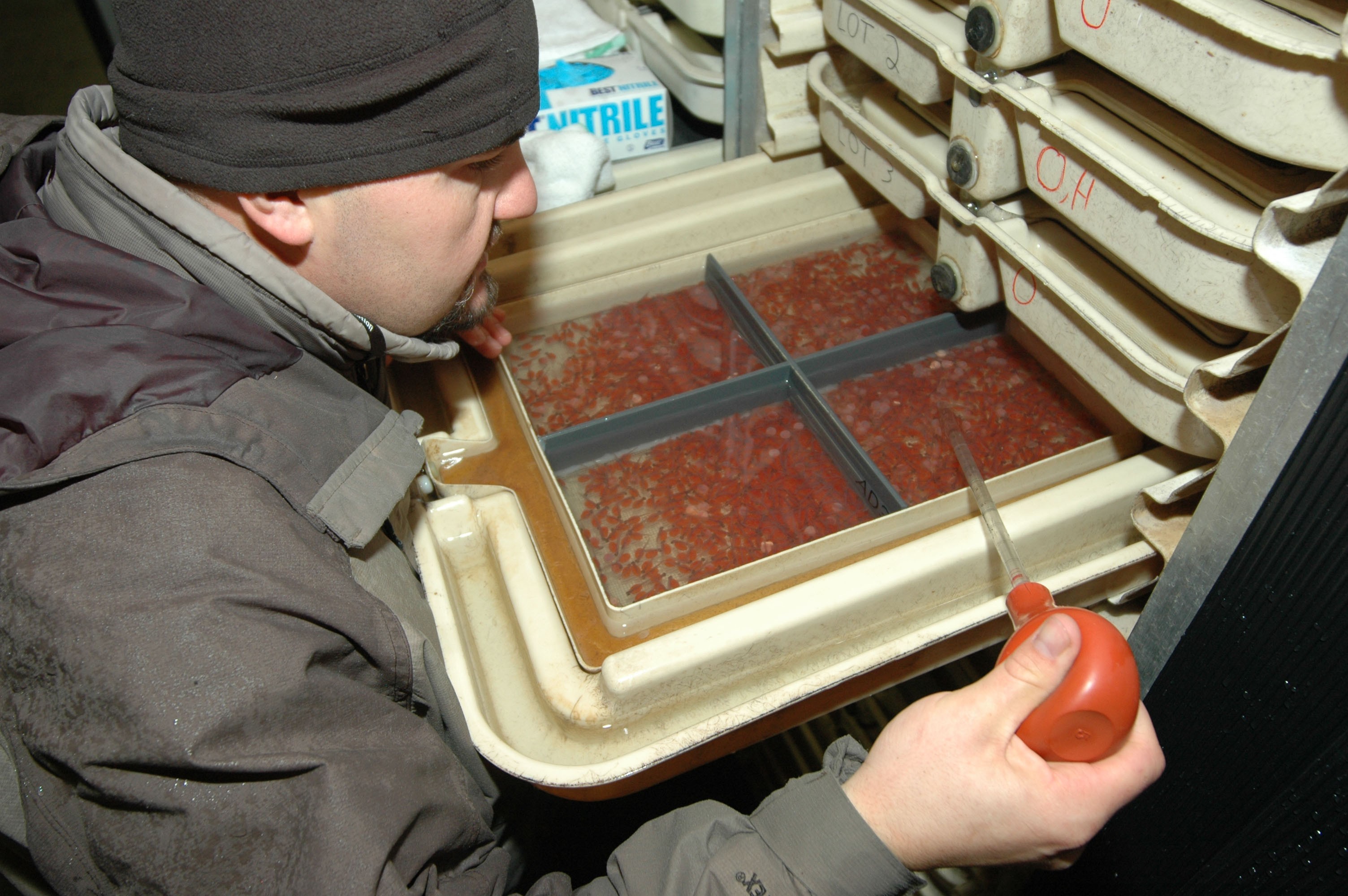LAKE SONOMA, Calif. - Ben White, a biologist with the Pacific States Marine Fisheries Commission, examines in the palm of his hand a small red fish egg squeezed from the vent of an ovulating female coho salmon.
"Yeah, she's going to spawn early," says White. He and fellow biologist Rory Taylor, along with Wes Hartman, a fisheries technician, and Brett Wilson, a California Department of Fish and Game senior hatchery supervisor, are at the Don Clausen Warm Springs Hatchery in Lake Sonoma, Calif. scanning female coho to determine which ones are ready to spawn. The fish, the facility and the biologists are all part of a million dollar multi-agency recovery effort set up to restore coho to the Russian River.
"In 2001, we knew we needed to start bringing in fish," said White. "We collected a couple hundred fish each year to start our source population here at the hatchery."
They made it three years. By 2004, coho in the 1,485-square-mile Russian River Watershed were "few and far between," said White. "We were lucky we started when we did."
It would be the beginning of the Russian River Coho Captive Broodstock Program at Warm Springs Hatchery, a facility funded by the U.S. Army Corps of Engineers San Francisco District.
"Basically what you see here are the last remaining wild fish of the Russian River Watershed brought into captivity," said White. Coho spawn from December to January. It is during this period that biologists strip eggs from females, mix them with sperm, and monitor their growth in incubation dishes. Selecting which male to pair with which female comes down to a highly crafted breeding matrix. Each female is paired with up to four males.
"Since we are dealing with such a small source population, a lot of these fish are closely related to each other," said White. "What we are trying to do is avoid inbreeding as much as possible and maximize genetic variation."
It is the young of this captured source population that is eventually stocked back into tributaries that historically had coho. This is the beginning of a three-year maturation cycle for coho.
"They spend one year in fresh water and two years in the ocean, then they return as three-year old fish," said White. "Our hope is that these fish return to the same streams that we put them in and spawn on their own. We're not trying to create a hatchery run of fish."
Since its inception, the program has completed six spawning cycles and released nearly 300,000 juveniles back into the Russian River.
"Our goal is to re-establish a self-sustaining wild population," said Wilson. "If we do our jobs well, hopefully in 10 to 15 years we won't have a job."






Social Sharing